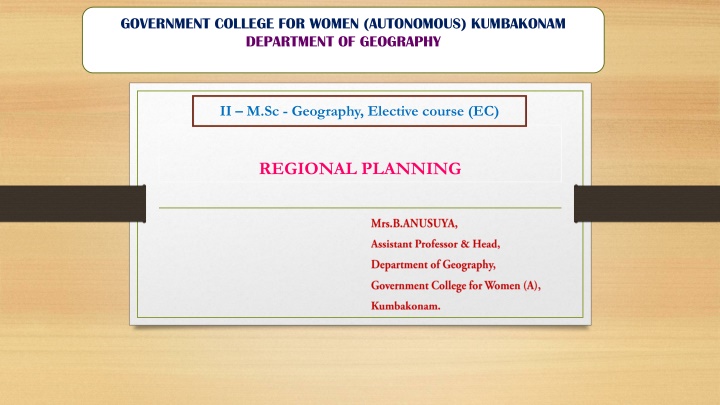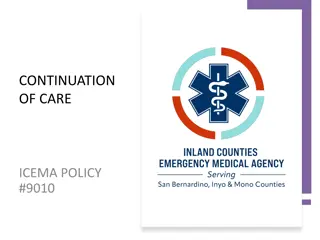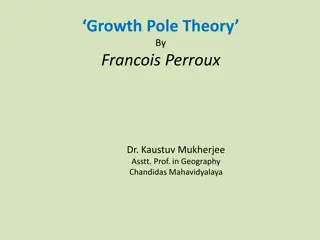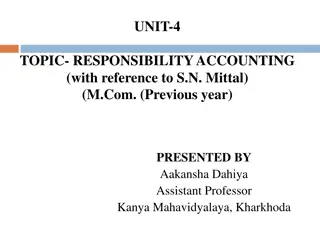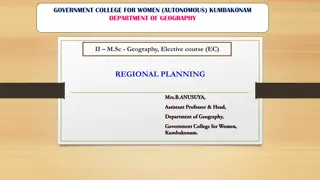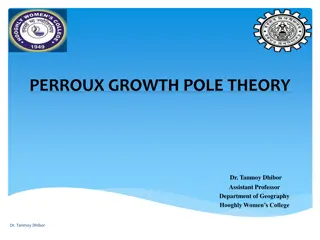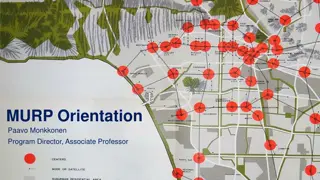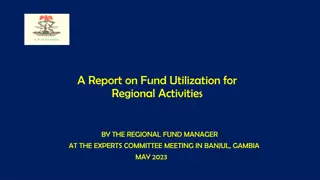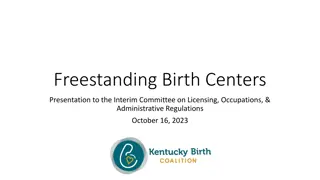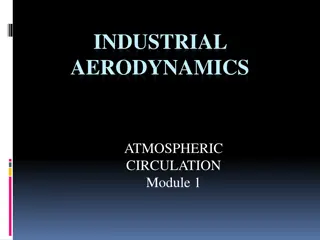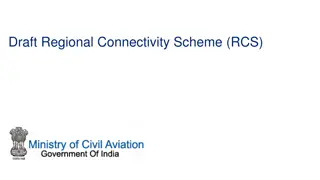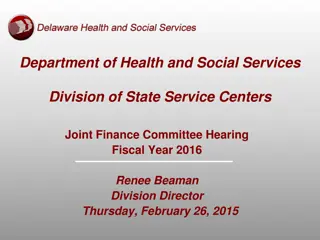Theory of Growth Poles and Centers in Regional Planning
Economic development is not uniform across regions, with growth poles and centers being key concepts in achieving balanced regional development. Initially proposed by Fran.ois Perroux, growth poles are areas where growth is concentrated, leading to the development of linked industries. Despite some challenges and unrealistic expectations, the core idea remains significant in understanding regional economic dynamics and fostering development.
Download Presentation

Please find below an Image/Link to download the presentation.
The content on the website is provided AS IS for your information and personal use only. It may not be sold, licensed, or shared on other websites without obtaining consent from the author.If you encounter any issues during the download, it is possible that the publisher has removed the file from their server.
You are allowed to download the files provided on this website for personal or commercial use, subject to the condition that they are used lawfully. All files are the property of their respective owners.
The content on the website is provided AS IS for your information and personal use only. It may not be sold, licensed, or shared on other websites without obtaining consent from the author.
E N D
Presentation Transcript
GOVERNMENT COLLEGE FOR WOMEN (AUTONOMOUS) KUMBAKONAM DEPARTMENT OF GEOGRAPHY II M.Sc - Geography, Elective course (EC) REGIONAL PLANNING
GROWTH POLE AND GROWTH CENTRE - MODELS Growth generally does not take place simultaneously at all places but is concentrated in few places. Such places are called growth poles and growth centers. The theory of growth pole and growth centers may be successfully applied to attain a balanced regional development.
Economic development is always an uneven spatial process. However, economic theories used to neglect geographical concentration of activities and explain development in an abstract and ideal world. In the 1950s, Fran ois Perroux and his disciples developed a concept of unbalanced economic development: growth poles (p les de croissance). Although originally growth poles were not defined in geographical settings, the idea was soon developed and modified as a theory and strategy of regional development, and widely adopted in policy arenas throughout the world in the 1960s and 1970s.
In transforming from a theoretical idea to a practical instrument and gaining public popularity, growth poles lost their original meaning and intellectual rigor. In the 1980s, most growth pole projects were abandoned for failing to achieve their initial goals, although some policy targets had unrealistic expectations. Core industries can involve a wide variety of sectors such as automotive, aeronautical, agribusiness, electronics, steel, petrochemical, etc. Direct effects imply the core industry purchasing goods and services from its suppliers (upstream linked industries), or providing goods and services to its customers (downstream linked industries).
The central idea of the growth poles theory is that economic development, or growth, is not uniform over an entire region, but instead takes place around a specific pole (or cluster). This pole is often characterized by core (key) industries around which linked industries develop, mainly through direct and indirect effects. Indirect effects can involve the demand for goods and services by people employed by the core and linked industries supporting the development and expansion of economic activities such as retail. The expansion of the core industry implies the expansion of output, employment, related investments, as well as new technologies and new industrial sectors.
Global supply chains have challenged several dimensions of the growth poles theory since growth and linkages generated by a core industry could concern activities located elsewhere. Generally such a growth steals the development of hinterland and leads to skewed pattern of development. Growth generally does not take place simultaneously at all places but is concentrated in few places. Such places are called growth poles and growth centres. The theory of growth pole and growth centres may be successfully applied to attain a balanced regional development. Growth centres and growth poles theory is very attractive for a regional planner due to the concepts used in the theory.
Most important is the promise of trickle down in future. As according to this concept over a period of time, deglomeration economies start functioning on a pole when it grows excessively due to factors like Congestion, traffic problems ii. High population density iii. High prices of land and inputs iv. Limitation of the expansion of the market. Hence, for a successful planning, it is necessary that the trickle down from the poles is facilitated and polarization is contained beyond a limit by way of suitable planning for the region.
The industries start moving towards hinterland. This aspect has led to most of the developing, underdeveloped as well as developed countries of the world to adopt this model for regional planning. Therefore to attain a balanced regional development the theory of growth pole suggest that some places in the backward regions must be selected and developed as poles. This actually means creating structural economic disparities deliberately but this will be of worth as the development of growth poles in the backward region will have two effects
i. It will result in higher average income of the region. ii. It will send impulses of economic and industrial pulses throughout region by trickledown effect.
